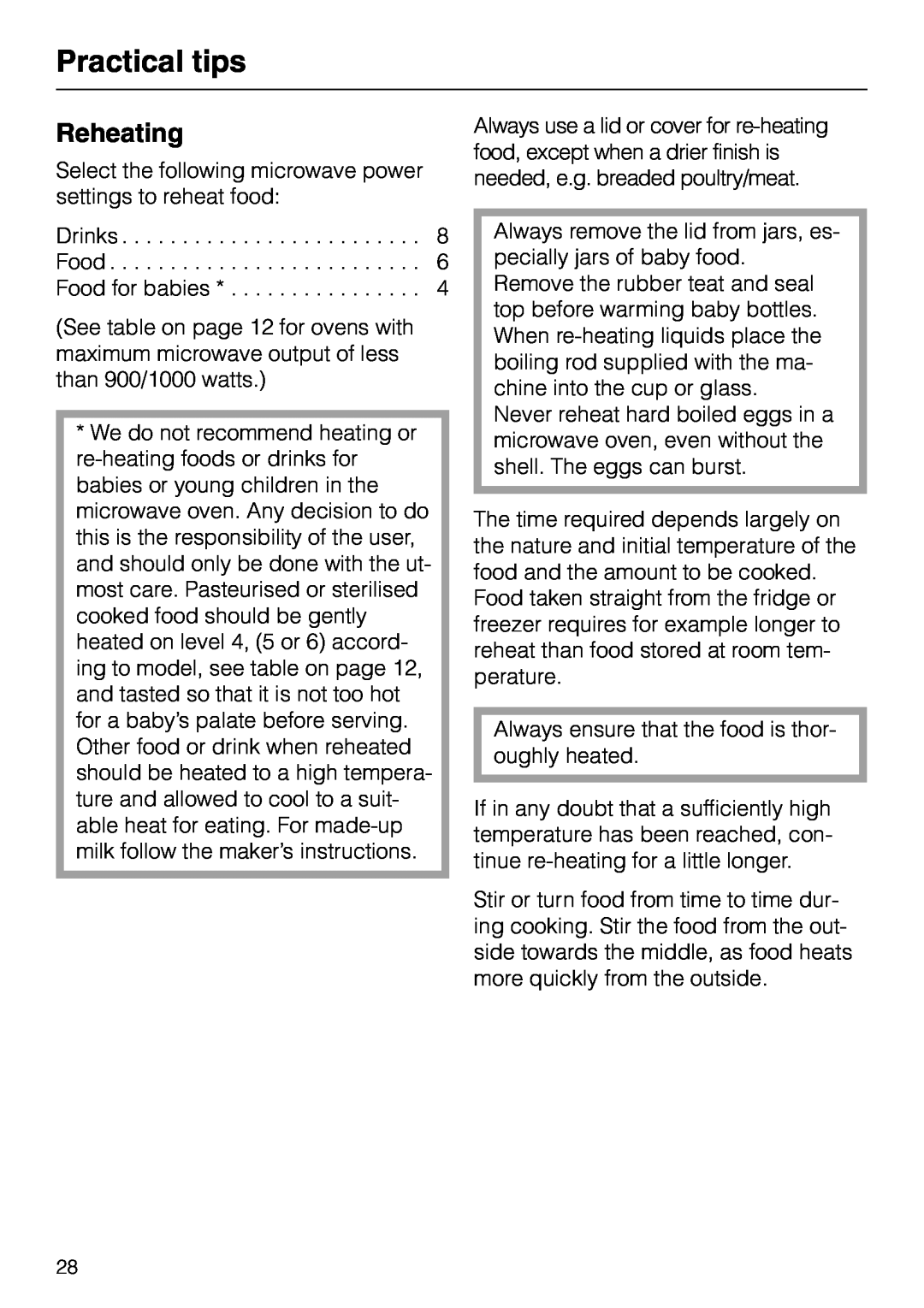
Practical tips
Reheating
Select the following microwave power settings to reheat food:
Drinks . . . . . . . . . . . . . . . . . . . . . . . . . 8 Food . . . . . . . . . . . . . . . . . . . . . . . . . . 6 Food for babies * . . . . . . . . . . . . . . . . 4
(See table on page 12 for ovens with maximum microwave output of less than 900/1000 watts.)
*We do not recommend heating or
Always use a lid or cover for
Always remove the lid from jars, es- pecially jars of baby food.
Remove the rubber teat and seal top before warming baby bottles. When
Never reheat hard boiled eggs in a microwave oven, even without the shell. The eggs can burst.
The time required depends largely on the nature and initial temperature of the food and the amount to be cooked. Food taken straight from the fridge or freezer requires for example longer to reheat than food stored at room tem- perature.
Always ensure that the food is thor- oughly heated.
If in any doubt that a sufficiently high temperature has been reached, con- tinue
Stir or turn food from time to time dur- ing cooking. Stir the food from the out- side towards the middle, as food heats more quickly from the outside.
28
